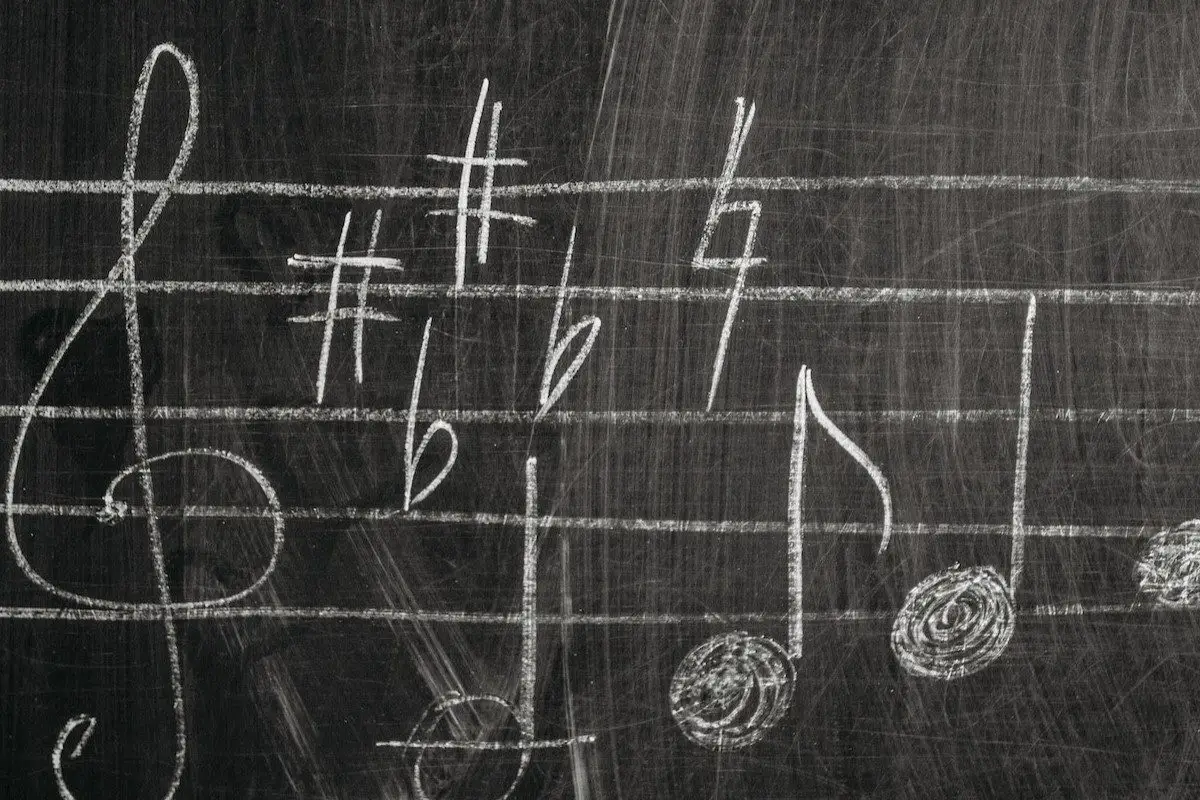In the world of music, keys hold the secret to creating captivating melodies. Whether it’s a happy and bright major key or a more somber minor key, each key has its own unique sound and feel. Ever wondered what a key in music really means? How does it relate to notes, scales, and chords? Let’s unravel the mystery and discover the true essence of a key in this musical journey.
What is a key in music? A key in music refers to the main group of pitches or notes that form the harmonic foundation of a piece. It is determined by the specific scale from which the song’s pitches are derived, giving it a distinct tonal center and musical identity.
What is a key in music?
A key represents the main group of pitches or notes that provide a sense of tonal center and shape the overall character of the music. Imagine a key as the secret code that unlocks the musical universe, giving each piece its unique identity and emotional impact.

AKAI Professional MPK Mini MK3

AKAI Professional MPK Mini MK3
What are pitches and scales?
To comprehend a key, we must first understand the role of pitches and scales. Pitches are individual musical notes, while scales are sequences of pitches arranged in a specific order. In a key, the main pitches used in a song typically come from a particular scale, acting as the foundation for the piece’s melodies and harmonies. It’s like a musical palette from which the composer creates their masterpiece.
Now, how do we identify and name a key? Well, it’s all about the scale used. For example, if a song solely utilizes the notes of the C Major scale, we can confidently say that the song is “in the key of C Major.” In simpler terms, the key represents the playground where the song’s musical ideas and melodies come to life. By understanding the key, we can unlock a deeper appreciation for the structure and emotional impact of the music we enjoy.
How do you identify the key of a song?
The key signature is the code we encounter at the beginning of a piece, right after the clef sign and before the time signature. It consists of sharps (#) or flats (♭), indicating specific notes that are consistently altered throughout the piece. Think of the key signature as the musical roadmap, guiding us through the harmonic terrain of the song.
To uncover the key, we search for the tonic chord and note. The tonic chord is the chord built on the note that corresponds to the key. It serves as the anchor, providing a sense of resolution and stability. When we listen closely, we’ll notice that most songs start and end with the tonic chord, making it a critical clue to identifying the key.

In the realm of keys, we encounter relative keys – pairs of major and minor keys that share the same key signature. These keys are like twins, similar yet distinct in their tonal characteristics. The major key and its relative minor key are always three semitones apart. This knowledge helps us differentiate between major and minor keys, understanding their contrasting moods and emotional nuances.
Major keys are often associated with upbeat, joyful, and bright-sounding music. Songs in major keys have a sense of positivity and tend to evoke feelings of happiness and cheerfulness. The melodies and harmonies in major keys sound vibrant and energetic, creating a lively atmosphere.
On the other hand, minor keys evoke a different set of emotions. Songs in minor keys often have a melancholic, mysterious, or even dramatic quality. The tonalities in minor keys lend themselves to expressing sadness, introspection, or intense emotions. The melodies and harmonies have a certain depth and richness that tug at our heartstrings.
Now, let’s take a look at a few “dos and don’ts” to keep in mind when exploring and experimenting with keys in music:
| Do’s | Don’ts |
|---|---|
| Do experiment with different keys to discover unique tonal flavors. | Don’t limit yourself to only one key; embrace the diversity of musical expressions. |
| Do pay attention to the tonal center and the role of the tonic chord. | Don’t disregard the importance of understanding keys in music composition and analysis. |
| Do use the key as a tool to evoke specific emotions and set the overall mood. | Don’t be afraid to explore complex harmonic progressions within a key to add depth and complexity to your music. |
| Do remember that modulations can occur, shifting the key throughout a song. | Don’t forget to experiment with different modes and scales within a key for added variety. |
Why should instruments complement the key in music?
Different instruments naturally gravitate towards certain keys due to their tonal characteristics. By selecting instruments that are well-suited to the key, you can achieve a harmonious blend and prevent clashes in your arrangements. For instance, if you’re working in the key of A minor, instruments like acoustic guitar, piano, or strings can add warmth and depth to your composition.
Understanding the chords that naturally occur within a key allows producers to craft compelling chord progressions.
Understanding the chords that naturally occur within a key allows producers to craft compelling chord progressions. By utilizing the chords derived from the key, you can create smooth and satisfying harmonic movements that captivate the listener. Experiment with different progressions, such as I-IV-V or ii-V-I, to add variety and musical interest to your compositions.
What is transposing?
Transposing is the process of changing the key of a song or composition. Knowing how to transpose effectively can be a valuable tool for music producers. When working with vocalists, it’s essential to find a key that suits their vocal range and timbre.
Transposing a song to a different key can ensure that the vocalist can comfortably deliver their best performance. By adapting the key to the vocalist’s capabilities, you create an environment where their voice can shine and convey the intended emotions of the song.
Key changes can be utilized strategically to add emotional impact and create dynamic moments within a composition. A well-executed key change can evoke a sense of anticipation, surprise, or heightened intensity. Experimenting with key changes allows you to guide the emotional journey of the listener, creating memorable and engaging musical experiences.
What is modal interchange and modulation?
Understanding keys and their relationship to scales, chords, and melodies provides a strong foundation in music theory. This knowledge empowers producers to employ composition techniques that enhance the musicality and coherence of their productions. Here are a few techniques to consider:
- Modal Interchange: Modal interchange refers to borrowing chords or notes from parallel keys or modes within the same key. This technique adds color and variety to your compositions. Experiment with borrowing chords from parallel minor or major keys to create unexpected harmonic twists and turns.
- Modulation: Modulation involves changing the key of a composition within the course of the music. By skillfully modulating between different keys, you can introduce contrast, build tension, or convey a sense of progression. Modulation adds depth and complexity to your compositions, keeping the listener engaged and intrigued.
If you want even more great tips and information, check out the video below.
Frequently Asked Questions (FAQ)
Here are answers to some common questions about understanding keys in music:
Can I change the key of a song after it’s been recorded?
Yes, it’s possible to change the key of a recorded song through a process called pitch-shifting. Pitch-shifting software or plugins can alter the pitch of the entire song while maintaining its tempo. However, keep in mind that extreme pitch-shifting can affect the quality and timbre of the vocals and instruments.
Do all songs need to be in a specific key?
No, there are no hard and fast rules dictating that all songs must be in a specific key. While working within a key can provide structure and coherence, some compositions intentionally explore unconventional tonalities or may not adhere strictly to a single key. Musical creativity allows for experimentation and pushing boundaries.
Can a song be in multiple keys at the same time?
Yes, it’s possible for a song to incorporate multiple keys simultaneously, which is known as polytonality. Polytonal compositions can create unique and dissonant harmonies by layering contrasting keys. This technique can be employed to evoke specific moods or to add complexity and richness to the musical arrangement
Conclusion
And there you have it—the key to unlocking your musical journey! From understanding the concept of keys to applying this knowledge in music production, you’re now equipped with the tools to create harmonious and captivating compositions. Remember, whether you’re playing, producing, or simply enjoying music, it’s all about finding the right key to make a melodious impact.
Did I cover everything you wanted to know? Let me know in the comments section below (I read and reply to every comment). If you found this article helpful, share it with a friend, and check out my full blog for more tips and tricks on unlocking the secrets of music production. Thanks for reading, and may your musical endeavors always be in tune!
Key Takeaways
This article covered the topic of understanding keys in music. Here are some key takeaways:
- A key is the tonal center that forms the foundation of a musical composition.
- Keys are derived from specific scales and determine the notes used in a composition.
- Understanding keys enhances harmonic structure, facilitates transposition, and adds emotional impact to music.
- Selecting compatible instruments and utilizing chord progressions within a key contribute to a cohesive sound.
- Modulation and key changes can create contrast and progression within a composition.















